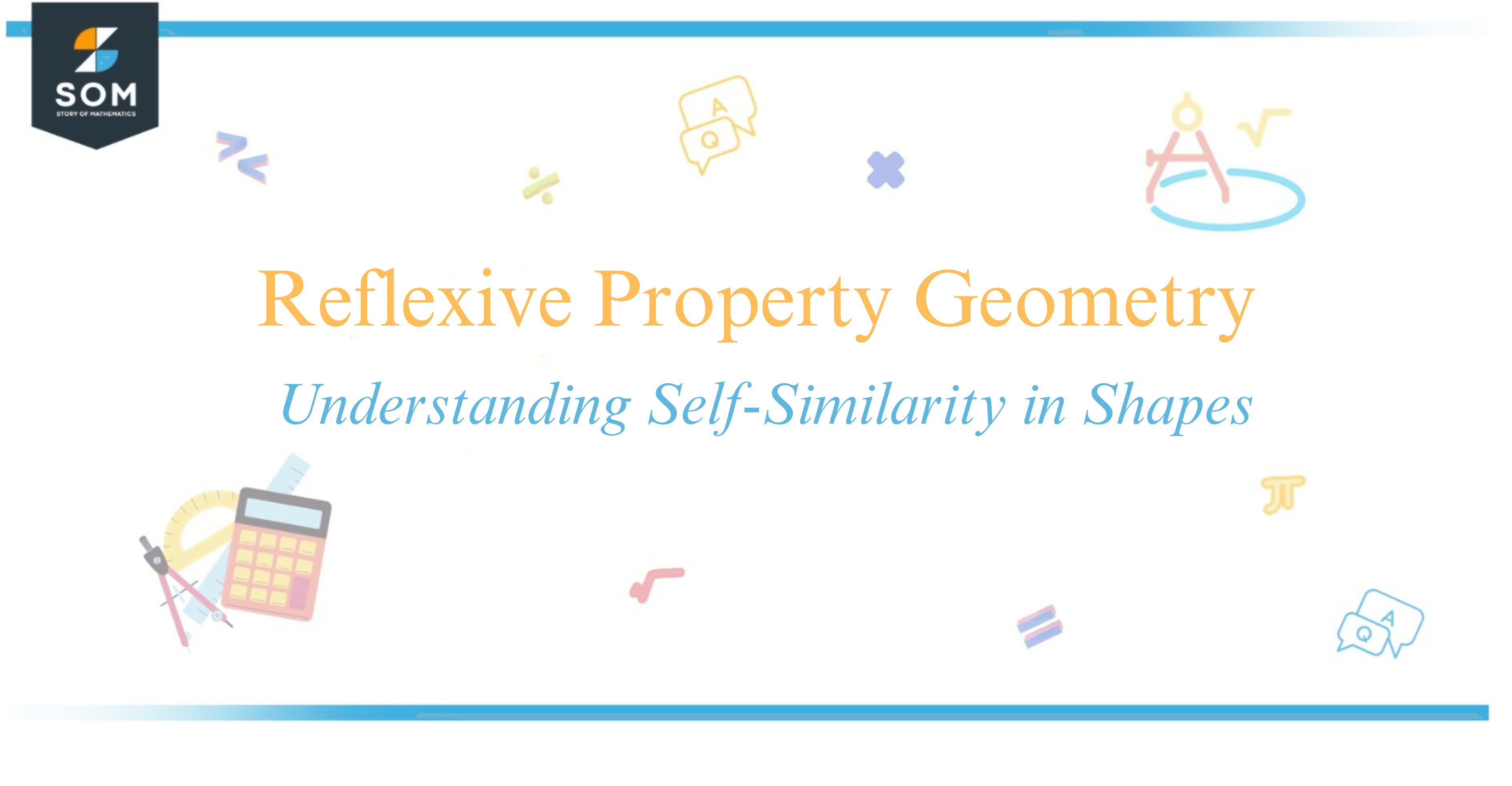
The reflexive property in geometry is a fundamental concept that asserts any mathematical object; be it an angle, line segment, or geometric shape, is congruent to itself.
This seems intuitively obvious, yet it’s an essential building block used throughout geometric proofs and algebraic equations, acting as a cornerstone for more complex reasoning and theorems.
My exploration into this area of math teaches me that the reflexive property roots itself in the idea of equality and congruence, indicating when two items are the same, they share the same size and shape or have an identical value.

In geometry, particularly, I find this property comes into play when establishing the congruence of shapes and angles, among other elements.
Imagine reflecting a shape over a mirror; the shape and its reflection, although opposite in orientation, are congruent – they have the same dimensions and angles as the original.
This is the essence of the reflexive property; an object is always equal and congruent to itself in every possible way. It’s a simple, yet powerful, truth that I consistently use to construct logical arguments and proofs in geometry.
As I continue delving into the subject, remember, that the beauty of math often lies in the simplicity of its principles. The reflexive property may be straightforward, but it’s the reliable ground upon which more intricate ideas are developed.
Join me as we look deeper into its applications and implications in geometry.
Exploring the Reflexive Property in Geometry
In my journey through the world of geometry, I’ve recognized that certain properties are the foundation of understanding more complex concepts. One such property is the reflexive property.
This property is elegantly simple—it tells us that any geometric element, such as an angle or line segment, is always congruent to itself. For instance, if there’s a line segment $\overline{AB} $, it’s a given that $\overline{AB} \cong \overline{AB} $.
When working with figures, this property ensures that the measure of each element, such as the sides of a triangle, are congruent to themselves, a concept essential in composing geometric proofs.
It might seem straightforward that an element has the same size and shape as itself, but this assumption is pivotal in the realm of geometry.
Let’s consider the reflexive property of congruence within shapes:
| Shape | Reflexive Property Example |
|---|---|
| Triangle | Each angle matches itself, $\angle A \cong \angle A $ |
| Square | Each side is equal to itself, $\overline{AB} \cong \overline{AB} $ |
This property also dovetails with other properties like the symmetric property and the transitive property to form the bedrock of logical reasoning in geometry.
While the symmetric property informs us that if an element A is congruent to B, then B is congruent to A, the transitive property takes it a step further: if A is congruent to B, and B is congruent to C, then A is congruent to C.
Understanding the reflexive property is not just about recognizing an object’s self-congruence; it’s about appreciating the inherent relation and ratio within an object’s area and measure, which I find a fascinating aspect of proofs and logical assertions. In my proofs, I often rely on this property to simplify and validate statements about geometric figures.
Theoretical Aspects and Further Applications
In my study of geometry, I’ve found that the reflexive property isn’t just a casual statement that an object is congruent to itself; it’s a cornerstone of mathematical logic.
Take, for example, any geometric shape. Mathematically, I can state for any side length ( a ), ( a = a ), which seems obvious, but it’s critical when solving equations and proving theorems.
In algebra, where quantities and real numbers are manipulated, the reflexive property of relations plays a significant role.
It is part of a larger framework known as equivalence relations, which also includes the symmetric property and the transitive property. A binary relation on a set is considered an equivalence relation if it is reflexive, symmetric, and transitive. This is fundamental when I’m working with number sets and tackling complex problems.
The following table outlines how these properties interconnect:
| Property | Description | Expression Example |
|---|---|---|
| Reflexive Property | Every element is related to itself. | ( a = a ) |
| Symmetric Property | If one element is related to another, the reverse is also true. | If ( a = b ), then ( b = a ) |
| Transitive Property | If one element is related to a second, and the second is related to a third, then the first is related to the third. | If ( a = b ) and ( b = c ), then ( a = c ) |
In geometry specifically, the reflexive property of congruence asserts that any geometric shape is congruent to itself, a helpful principle when determining if other shapes or side lengths are also congruent through substitution.
When I apply it alongside the transitive and symmetric properties of congruence, I can deduce the necessary conditions for corresponding angles and sides.
For instance, if I have two equations that describe the lengths of sides in two triangles, I might use the reflexive property to find congruencies within a single triangle, and then through the transitive property, compare those lengths to sides of another triangle.
While the principle itself is straightforward, its applications are vast and form the backbone of logical reasoning in mathematics, which is always a friendly companion on my journey through numbers.
Conclusion
In exploring the concept of reflexive property in geometry, I’ve underscored a fundamental truth: any geometric figure is congruent to itself. This principle may seem evident at first glance but holds substantial weight in mathematical reasoning and proofs.
The statement that an angle or shape is congruent to itself—mathematically expressed as $\angle A \cong \angle A$ for angles, or $\overline{AB} \cong \overline{AB}$ for line segments—forms the cornerstone of the reflexive property.
This property is omnipresent, whether I’m considering the simplest of shapes or the most complex of geometric configurations. It assures me that each geometric element retains its identity and congruency under all circumstances.
In practical terms, when I work on geometric proofs, the reflexive property often provides a starting point, validating the equality of sides or angles as I navigate through the intricacies of the problem at hand. This simplicity offers a solid bedrock upon which I build further conclusions and unify the various components of a geometrical argument.
My appreciation for this property deepens as I recognize its essential role in cultivating a logical framework within mathematics.
It not only simplifies proofs and theoretical discourse but also subtly reinforces the consistent nature of mathematical truths, reflecting the order and predictability that I so value in this field.
